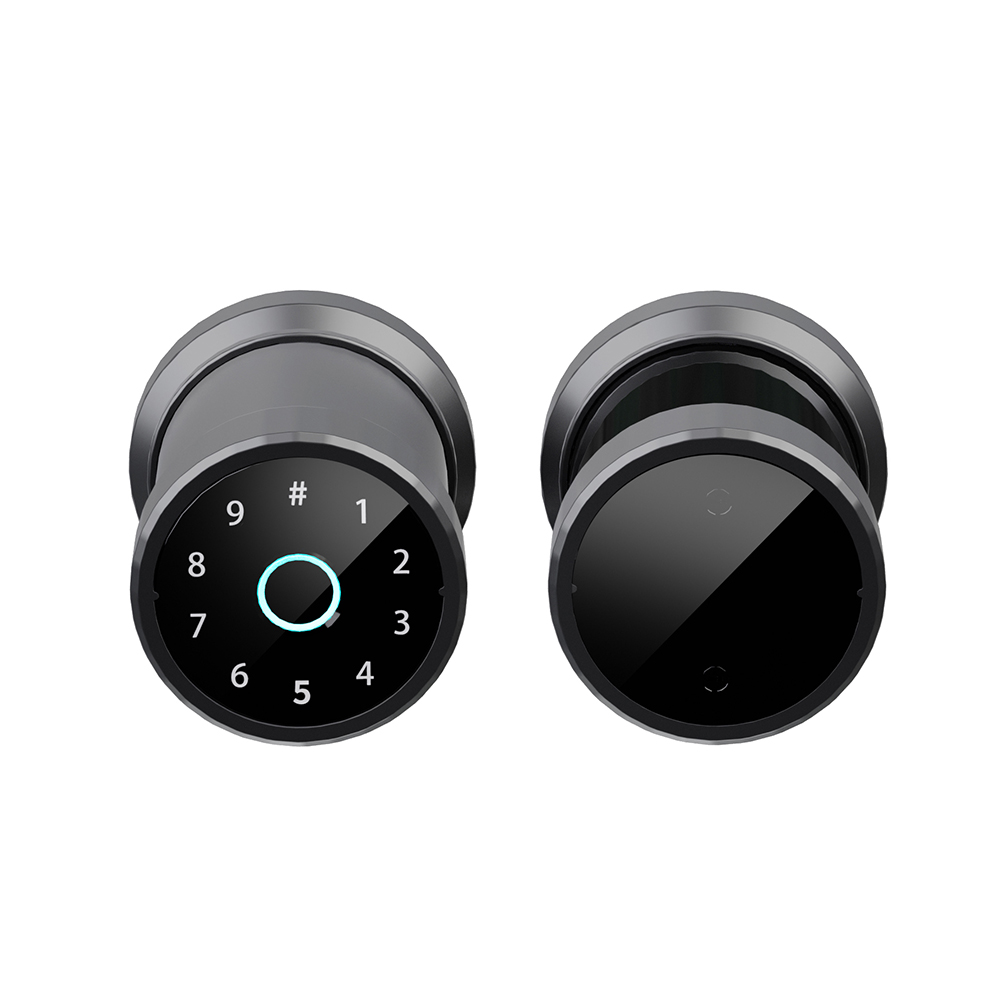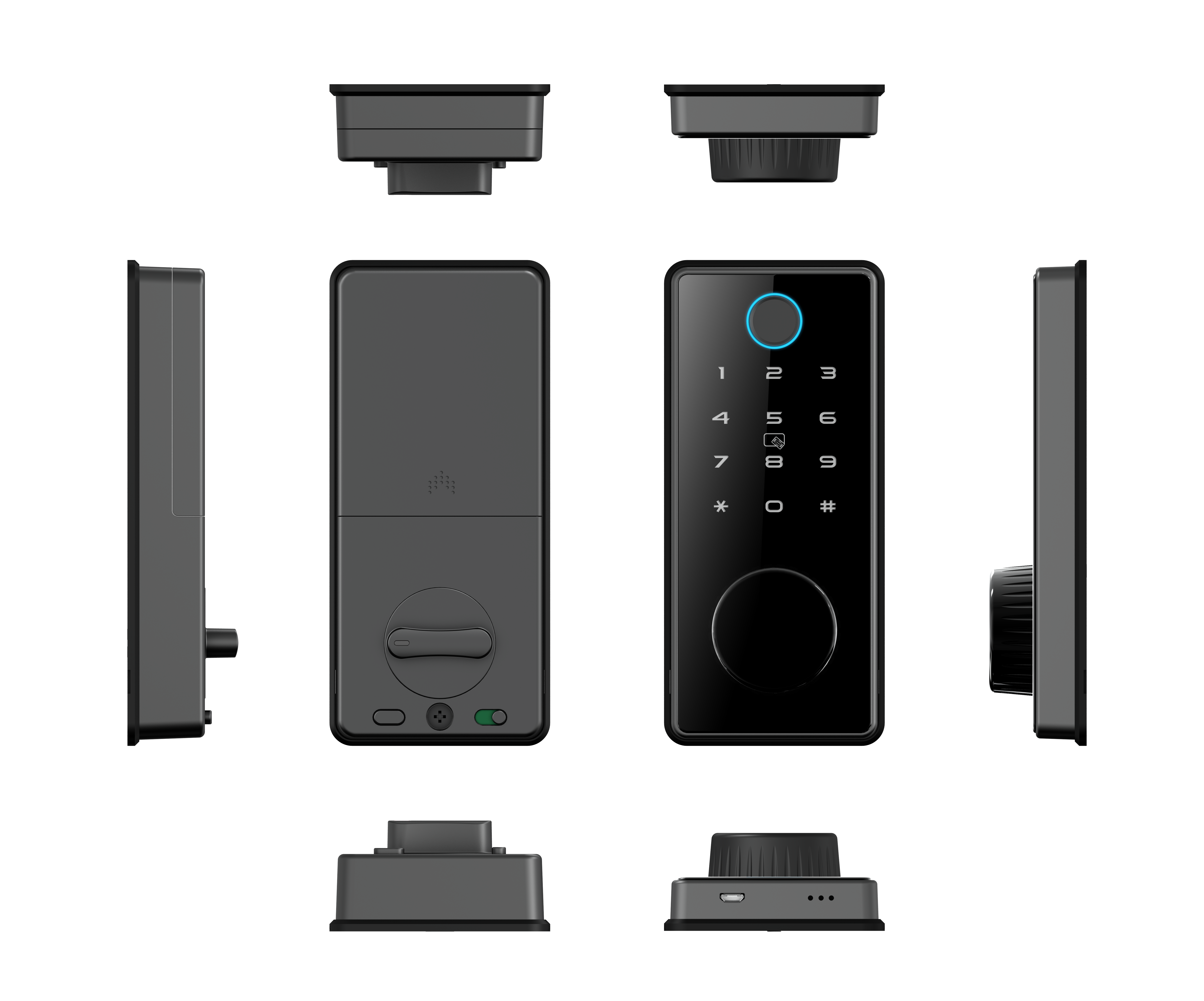Categories
Latest blog
Deadbolt is a safer type of door lock. It is usually made of metal and has a retractable latch (or deadbolt) and a turning knob or thumb dial. Deadbolt deadbolts require manual turning or pushing to lock the door by inserting the latch, providing extra security. Deadbolt bolts are usually longer and can dig deeper into the door frame, making the door more difficult to pry open. Deadbolt locks are mostly used on exterior doors or doors that require higher security.
1-1,The main characteristic of a deadbolt lock is its bolt, which is typically made of solid metal and is operated by turning a key or a thumbturn. When the deadbolt is engaged, the bolt extends fully into the strike plate or the door jamb, firmly locking the door in place. This makes it more resistant to forced entry compared to a spring latch lock, which can be easily bypassed with a credit card or similar objects.
1-2,Deadbolts come in different types, including single-cylinder deadbolts and double-cylinder deadbolts. Single-cylinder deadbolts are the most common and have a key cylinder on the outside and a thumbturn on the inside. Double-cylinder deadbolts require a key to unlock from both the inside and the outside, providing added security but also posing a potential safety risk as they can impede quick exit during emergencies.
Overall, door locks are an important part of a home security system and are widely used to enhance the protection of residential and commercial properties. If you also like this door lock, you might as well try Locstar smart deadbolts LS-C88
Knob lock is a common type of door lock, usually used for indoor doors or places that require convenient entry and exit. They are usually made of metal and have a rotating round or ball-shaped knob that is used to lock and unlock the door. Knob locks usually have only a simple lock cylinder and are easy to install and operate. However, because knobs can be easily pried, they offer relatively low security and are not suitable for use on doors that require greater security.
2-1,Design and Operation: Knob locks have a knob or lever handle on both the interior and exterior sides of the door. This makes them easier to operate compared to deadbolts, as they do not require a key to lock or unlock from the inside. However, this also means that knob locks are generally less secure than deadbolts and can be more susceptible to forced entry.
2-2,Security Level: Knob locks are considered to provide a lower level of security compared to deadbolts. They are typically used as secondary locks or in conjunction with deadbolts for additional security. This is because the locking mechanism of a knob lock is usually a spring latch, which can be easily manipulated or bypassed using simple tools.
2-3,Security Level: Knob locks are considered to provide a lower level of security compared to deadbolts. They are typically used as secondary locks or in conjunction with deadbolts for additional security. This is because the locking mechanism of a knob lock is usually a spring latch, which can be easily manipulated or bypassed using simple tools.
2-4,Vulnerabilities: One significant vulnerability of knob locks is their exposed knob or lever handle on the exterior side of the door. This makes them susceptible to being forcibly removed or damaged, providing unauthorized access to the lock. Additionally, knob locks are vulnerable to lock picking and other forms of manipulation.
2-5,Intended Use: Knob locks are commonly used in interior applications, such as bedroom doors, bathroom doors, or office doors within a building. They are less frequently used as the sole locking mechanism on exterior doors due to their lower security level.
It's important to note that while knob locks may offer convenience and serve a purpose in certain scenarios, they should not be solely relied upon for securing exterior doors. It is generally recommended to have a smart deadlock or another more secure type of lock as the primary locking mechanism for external entry points.If you also like this door lock, you might as well try Locstar smart fingerprint deadlock LS-C87


The handle lock is a design that combines the functions of door handles and door locks. They usually have an integrated handle and lock cylinder, and the door is locked and unlocked by turning the handle. Handle locks are generally used for indoor doors or places that require easy entry and exit, providing a convenient method of operation. However, similar to knob locks, handle locks are relatively less secure and susceptible to prying attacks.
3-1,Design and Operation: Handle locks feature a lever handle on both the interior and exterior sides of the door. The lever handle is used to operate the lock, allowing for easy and quick access without the need for a key. This makes handle locks particularly convenient for interior doors in residential and commercial buildings.
3-2,Security Level: Handle locks generally provide a moderate level of security. They are typically used for interior doors where high-security measures are not required. However, it's important to note that the security level can vary depending on the specific design and quality of the handle lock.
3-3,Locking Mechanism: Handle locks typically use a spring latch mechanism, similar to knob locks. This type of mechanism automatically engages when the door is closed, but it can be easily bypassed using simple tools. Therefore, handle locks are often used in conjunction with other types of locks, such as deadbolts, to enhance security.
3-4,Accessibility: Handle locks are designed to be easily operated, making them accessible for individuals with disabilities or limited hand strength. The lever handle allows for a more ergonomic and effortless grip compared to knob locks, which can be beneficial for people with mobility issues.
3-5,Aesthetics: Handle locks often have a sleek and modern appearance, and they come in a variety of finishes and styles to match the overall aesthetic of the door and surrounding decor. This makes them popular choices for interior doors in residential and commercial settings.
It's important to consider the intended use and the level of security required when choosing handle locks. While they offer convenience and accessibility, they may not provide the same level of security as more robust locking mechanisms, such as deadbolts.If you also like this door lock, you might as well try Locstar handle smart lock LS-A61
It should be noted that deadbolt locks, knob locks and handle locks are not mutually exclusive concepts and can be combined using different lock types on the same door. For example, installing a deadbolt lock on the door provides extra security while installing a handle on the door provides easy entry and exit.
*If you are looking for suppliers to help with your door lock business (such as smart door locks or hotel door locks), remember to choose a smart lock factory that specializes in producing the highest quality products. We recommend contacting smart lock company Locstar.*